Peabody’s BedZed was the housing scheme that first got everyone talking about zero-carbon living. But is it all that it was cracked up to be?
When the UK’s first zero-carbon housing scheme was completed in 2001, it lit the blue touch paper that blasted zero carbon towards the top of the housing agenda. At the time, zero-carbon housing was the vision of a handful of idealists parked on the fringes of the mainstream industry. Social housing provider Peabody brought this vision closer to the centre in the form of the first serious attempt to make zero-carbon living practical at development level.
It certainly looked the part. Dubbed Teletubby-land by locals because of its distinctive coloured wind cowls, sky gardens and full-height conservatories, BedZed, which is located in Sutton, south London, set out to break the mould of traditional British housing. The idea was for it to be self-sufficient in energy and water, foster a close sense of community and pack as many people as possible onto a tiny plot to reduce the demand for valuable housing land.
These days the ideas behind BedZed seem fairly ordinary. Super-insulated, airtight homes with good thermal mass are regarded as standard stuff for today’s low-energy housing, and no self-respecting zero-carbon development would be seen without technologies such as biomass combined heat and power (CHP), rainwater harvesting and solar panels. But nobody really knows which of this catalogue of low-carbon solutions at the industry’s fingertips is the most practical and cost-effective in the long term. Seven years on, can BedZed provide any answers?
Energy problems
Regrettably, the development has not managed to live up to its zero-carbon billing. The basic message is that the individual homes perform well but the infrastructure has let the scheme down. Its biomass CHP system was meant to provide all the heat and much of the electricity for the 82 homes and 20 businesses but never worked properly and was abandoned in 2005. The district heating distribution system has also proved problematic, as there are problems with the hot water supply to some homes. BedZed’s wastewater recycling plant was also ditched because it was too expensive to run.
On a positive note the individual homes perform well and are liked by residents who also speak highly of the sense of community. “I love it here,” says Helen Woolston, who lives in a two-bedroom flat. “I love the flat and all the glass, which makes it very light.”
Although the homes have small gardens, the flip side is that they are closer together, which encourages social interaction. “You have to be deliberately antisocial if you don’t want to talk to people,” says Paul Thomas, who lives in a studio flat.
The key element in the low-energy strategy is the “sunspace”, a small, south-facing conservatory running the full height of each home. The idea is that solar gain from the sunspace is stored in the concrete structure of the homes so they stay at a constant, comfortable temperature. Residents also use the sunspaces as additional living and storage space – Woolston uses hers as an office and Thomas entertains guests.
But do the sunspaces work? Temperatures are acceptable in winter – providing the ventilation is correctly managed. Each sunspace is separated from the main home by a glass screen of double doors and windows, which are used to control heat gain and loss by occupiers. “In the winter it is important to keep the doors from the house to the sunspace closed as it gets quite cold in there,” says Simon Garner who lives in a three-bedroom house with his wife and two children. “If you are chatting to the postman, you don’t leave the inside doors open like you might in an ordinary home as you can’t boost the temperature.”
The only heating in the homes comes from a towel rail in the bathroom and the heat that escapes from a large hot water tank. The towel rail is on the same hot water circuit as the tank. “The only temperature control we have for the whole place is the thermostat on the hot water tank,” says Garner. “One of my criticisms is that if you want some extra heat in the winter you have to open the hot water tank cupboard doors. It also means you can’t turn off the heated towel rail in the summer unless you turn off the hot water.” According to a report published by Bioregional, the entrepreneurial charity that helped make BedZed happen, 42% of residents use their own electric heaters in winter.
Overheating is more of a problem. According to the Bioregional report, only 10% of residents are happy with internal temperatures in the summer, a problem aggravated by the towel rails. “In the summer the bathroom is like a sauna,” says Thomas. The report also says residents are reluctant to open some of the sunspace windows because of security concerns.
The use of sunspaces is controversial. Fionn Stevenson, a reader in sustainable design at Oxford Brookes university, says they do not pay their way. She says: “We calculated how much they cost and how much energy they saved and concluded they don’t pay for themselves.” She adds that sunspaces need careful management to work properly and that does not always happen.
Bioregional seems to agree with Stevenson, as it has dropped sunspaces from its newer developments. “The trouble is that they are expensive to put on and we want to build for the same cost as conventional developments,” says director Sue Riddlestone. “Our approach is to build for a normal cost and get people out of their cars and buying locally sourced food, as this saves more carbon.”
Bill Dunster, BedZed’s architect, says sunspaces are effective, good value, and very popular with residents. “They add about 7.5% to the build cost, increase the floor area by 15% and can be occupied for 80% of the year without needing any extra heating,” he says. Dunster concedes the top floor sunspaces overheat at BedZed but says this is because of cost-cutting. The sunspaces do have roof-level opening lights but the opening devices were left off. If these windows could be opened, this would keep the sunspaces cool without compromising security. Dunster still uses sunspaces in his newer developments, which have an overhang at roof level to add shade. He dismisses the towel rail problem as “totally mad”. “That could be solved for a few pence,” he says.
We calculated how much sunspaces cost and how much energy they saved and concluded they don’t pay for themselves
Fionn Stevenson, Oxford Brookes
Energy savings
Homes at BedZed use far less energy than conventional dwellings. The Bioregional study shows that they need 3,525kWh a year to heat – 81% less than the average in Sutton. The report adds that this figure is higher than expected because there are problems with the centralised hot water system that have led some people to use energy-guzzling immersion heaters. Also, 18 of the original 20 live-work units, which face north and do not benefit as much from solar gain, have been converted into homes.
Low-energy lighting and appliances, coupled with high levels of natural light, mean BedZed homes use 45% less electricity than the Sutton average. Unfortunately, this power is not produced from locally sourced wood chips in the CHP unit. The reason is that it involved Heath Robinson levels of complexity: the chips were automatically loaded into a dryer, then moved into a chamber where they were heated in the absence of oxygen to produce a gas; this was used to power an internal combustion engine, which turned a generator. There were problems with the automatic grabs for the woodchips and the engine kept seizing up owing to tar from the gas. In 2005, it was abandoned and conventional gas boilers were used to provide hot water to the district heating system.
Residents are unhappy at Peabody’s handling of the problems with the CHP plant and hot water distribution, which have been dragging on for years. “Everyone would say they haven’t had value for money from their service charge because of all the problems,” says Thomas. “I think there are so many things here that are unique in terms of their maintenance remits that Peabody’s response has been to ignore them.” Both Thomas and Riddlestone say Peabody simply is not geared up to looking after these cutting-edge technologies, but they also praise it for being brave enough to pioneer them.
In response, Peabody points out that specialist components are, by their very nature, often the preserve of small specialist suppliers, which can make it difficult to ensure a reliable maintenance service.
The underlying problem is that there is no biomass CHP system on the market suitable for a scheme on the scale of BedZed. Biomass systems for developments that require 1MW or so of electricity, are straightforward as they produce steam that spins a turbine, but BedZed only needs 120kW so is too small to warrant such a system. “We have learned that trying to do everything on site at this scale is difficult,” Riddlestone says.
The problems with the CHP system and hot water distribution have put Dunster right off CHP and district heating. “We don’t believe in this anymore for our schemes because the heat requirements are so low yet the infrastructure costs are so high and the commissioning is so damm hard,” he says. Instead Dunster fits small heat-only biomass boilers that serve six homes each. These are reliable and can even automatically order a delivery of wood pellets on the internet. The additional electrical demand is met by fitting more PV panels than at Bedzed. “Because the cost of PV has come down so much you can have a fit-and-forget solution,” Dunster says.
Peabody is carrying out a feasibility study into replacement options for the CHP system, and, according to Bioregional, is considering a heat-only biomass boiler. This means BedZed would not be self-sufficient in electricity, but Riddlestone thinks renewable energy supplied through the National Grid is a much better solution and more effort should be focused on grid-level renewable energy solutions. At least BedZed’s PV panels produce 20% of the scheme’s electricity without any need for maintenance.
The water system was a wash-out
The wastewater treatment was also an experiment too far. “At the time we did it only because there was one available and we wanted to try it out,” says Riddlestone. Called the Living Machine, it was almost as complex as the CHP plant. The water was run through a series of tubs containing reeds located in a conservatory. The idea was that bacteria on the roots of the reeds would purify the water. Like the CHP plant this required a lot of maintenance. “There was a nice old guy who used to run it and when he retired nobody wanted to take it on,” says Riddlestone. In any case, the Living Machine actually used more energy than a conventional sewage treatment plant.
There is some good news on the water front, though. Thames Water has installed an experimental wastewater treatment plant. It is the UK’s first membrane bioreactor, which works using a combination of biological treatment and a fine membrane that filters out solids, including bacteria. Thames Water is trying it out because it could be cheaper to install than running pipes to a sewage works from isolated developments.
According to Riddlestone, the plant produces more water than BedZed needs for flushing toilets and garden irrigation. Because of this, Thames Water has disconnected the rainwater harvesting system. The water was collected after it had percolated through the sedum roofs, and some residents complaining that it made the water brown. Residents use 71 litres of mains water per day, and 15 litres of recycled water, which is 50% less than the local average, and within the limits of level six of the Code for Sustainable Homes.
The key message from BedZed is to keep things simple by making homes as energy efficient as possible using passive measures. The big lesson for the industry is to get the infrastructure elements right and maintain them – which is tricky as they are a lifetime commitment. Dunster thinks this is going to hit the industry hard. “We think people using large-scale CHP systems are heading for a hell of a fall,” he says. An energy services company can limit the risk of this happening, but the problem is, as Building reported last week, these are virtually non-existent at the moment. BedZed was a brave experiment – many ideas worked and have been adopted – but it also shows that we have not cracked the zero-carbon challenge yet.
The design aspirations
The only temperature control we have for the whole place is the thermostat on the hot water tank
Simon Garner, Resident
BedZed was a brave attempt to help foster a more sustainable lifestyle. It was driven by environmental entrepreneurial charity Bioregional and Zedfactory, set up by architect Bill Dunster, with housing association Peabody providing the funding. It originally had 82 homes, 20 live/work units, office space for 100 people, a village green and a clubhouse in an attempt to create a sustainable community. The homes are low energy, with high levels of insulation; sunspaces are used to harness solar gain, which is stored in a thermally massive concrete structure to ensure even temperatures throughout the day. Passive ventilation is provided by the use of roof-mounted cowls and low-energy lighting and appliances were fitted.
Heating and hot water was to be provided by a biomass CHP unit fuelled by woodchips from locally sourced tree surgery waste. About 20% of the development’s power is provided by PV panels – the idea was that these would power the car charging points fitted next to each parking space. The homes were fitted with water-saving taps and WCs, which are flushed with water from a rainwater harvesting system and a water treatment plant called the Living Machine.
How is Bedzed holding up?
Much of BedZed’s construction was conventional and its fabric is holding up well. For example, its cavity walls have a brick outer leaf, which is in excellent condition.
The development also has large areas of weatherboarding made from green oak that has weathered down to a dark grey. Green oak is very durable and here it is showing no signs of deterioration, and fixings are in an as-new condition. High-quality timber windows were imported from Scandinavia and these, too, are in good condition. However, the exterior woodwork has not been painted since the scheme was completed seven years ago and needs it.
The unconventional elements of BedZed have been more problematic. The brightly coloured wind cowls on the roof, which led locals to name the development Teletubbyland, could do with repainting. A vane fell off one cowl so all of them have been reinforced with crude-looking brackets.
The sedum roofs have also sprung leaks, one of them above Bioregional’s office. “The roof gardens are a nice idea but we have had some leaks including one into our office which we’ve had for seven years and can’t fix,” complains Sue Riddlestone, a Bioregional director. She also says the sedum could do with more attention. “It needs fertilizing occasionally, but it doesn’t get done so it’s not looking too good.”
Peabody says the leaks from the roof gardens will be addressed within the next month.
How green is the Bedzed life?
A key part of the aspiration behind BedZed was to reduce reliance on cars and promote locally sourced food. Many people chose to live at there because they liked the idea of minimising their impact on the environment.
Car ownership is lower than average, and people with children complain it is difficult to get around Sutton without one. The attempt to promote electric cars has flopped – the idea was to have 40 of them but currently no residents own one. The electric car parking points look sad; most are bent over by inaccurate car-reversing manoeuvres. Parking is also a source of ire to residents. “There are only three visitor parking spaces and there is an ongoing discussion with Peabody to provide more parking,” says Paul Thomas, who doesn’t have a car but has friends who visit by car. Some people park their cars on local residential roads, which has caused friction with other residents. Ironically, the benefits of low car ownership is negated because BedZed’s reasonably affluent residents fly more than the UK average.
Allotments were provided for residents to grow vegetables but they have been unsuccessful because the ground turned out to be contaminated. Troughs were provided instead but aren’t used. “The allotments have been a dead loss,” says Thomas. “The trough idea didn’t work and they are full of weeds so it looks like a wasteland. It’s a disgrace really.” Thomas adds that some residents do have allotments elsewhere. According to the Bioregional report, 39% of residents do grow some food.
Composting bins were provided and used, but according to Thomas nobody did anything with the compost produced and there were problems with rats. Sixty per cent of BedZed waste is recycled or composted but this figure comes with the caveat that people tend to try harder when audited. Things have moved on since BedZed was built, and many councils now operate recycling and compost collection schemes.
So how does this all add up? According to Bioregional, if the entire world lived like the average European resident we would need three planets to support us. BedZed does better than this: the ecological footprint of the average BedZed resident is 4.67 global hectares, equivalent to 2.6 planets. If BedZed worked as originally designed, this figure would reduce to an ecological footprint of 4.32 hectares, or 2.4 planets. If BedZed worked as intended and was populated by committed environmentalists who did not fly and ate local food, their ecological footprint would be down to three hectares, equivalent to 1.7 planets. Which shows that zero-carbon housing can only do so much to save the world.
Postscript
Bioregional’s report, BedZed Seven Years On, is available from www.bioregional.com
Photographs by Joe Clark
Original print headline: So what’s life like in Teletubby Land?




















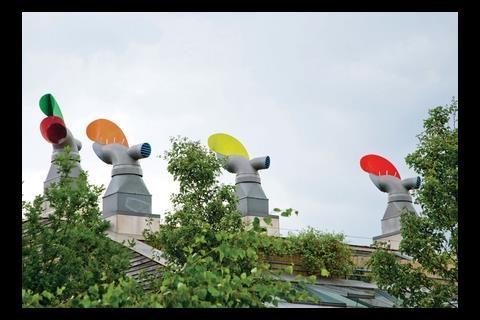

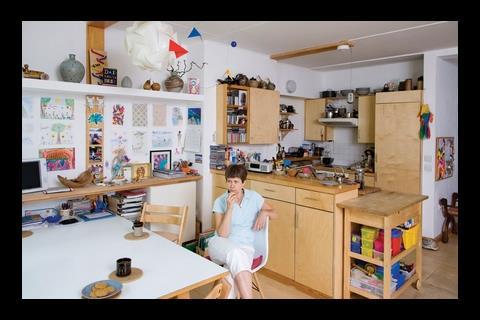


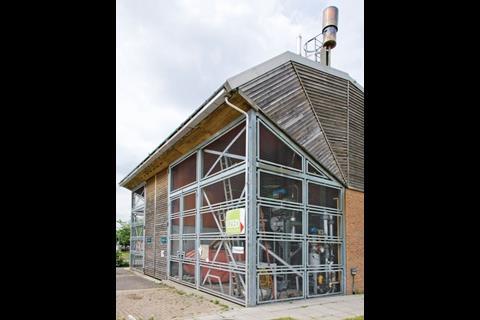
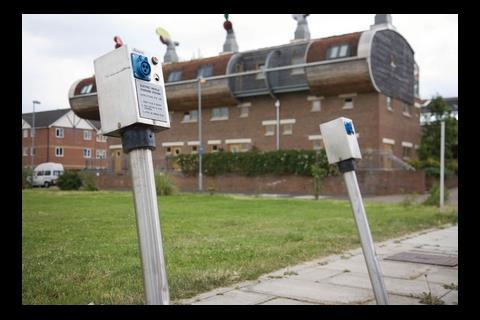

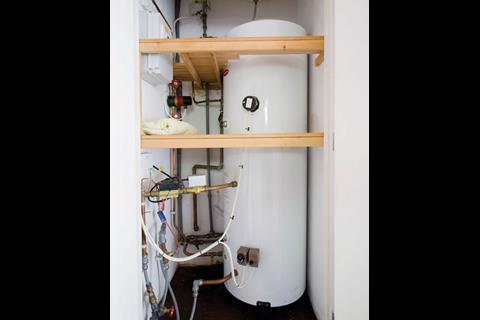
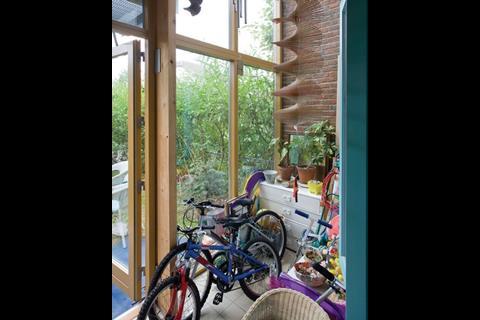







4 Readers' comments